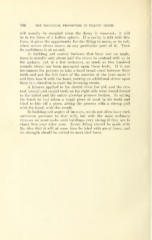Page 522 - My FlipBook
P. 522
246 THE TECHNICAL PROCEDURES IN FILLING TEETH.
will usually be rounded when the decay is removed; it will
be in the form of a hollow sphere. If a cavity is left with this
form, it gives the opportunity for the tilling to move, or to roll,
when severe stress comes on any particular part of it. Then
its usefulness is at an end.
In building out central incisors that have lost an angle,
there is usually only about half the stress to contend with as in
the molars; yet, in a few instances, as much as two hundred
poimds stress has been measured upon these teeth. It is not
uncommon for persons to take a hard bread crust between their
teeth and put the full force of the muscles of the jaws upon it
and then tear it with the hand, putting an additional stress upon
them in a direction to exalt the breaking strain.
A laborer applied to the dental clinic for aid, and the cen-
tral, lateral and cuspid teeth on the right side were found forced
to the labial and the entire alveolar process broken. In eating
his lunch he had taken a tough piece of meat in his teeth and
tried to bite otf a piece, aiding the process with a strong pull
with the hand, with this result.
In building out angles of incisors, we do not often have such
enormous pressure to deal with, but with the more ordinary
stresses we must make such buildings very strong if they are to
stand tirm year after year. Every filling should be made with
the idea that it will at some time be tried with great force, and
its strength should be suited to meet that force.


